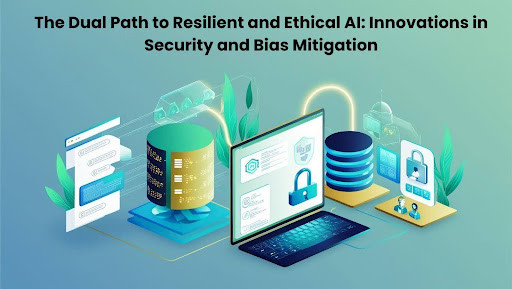
As artificial intelligence becomes increasingly embedded in critical systems, ensuring its security and ethical integrity is paramount. Naresh Babu Goolla, a leading researcher in responsible AI and autonomous cybersecurity, explores how emerging technologies are transforming digital defense while reinforcing fairness and trust. His recent work presents innovative frameworks that unify resilience with ethical AI development in an era of rapid automation.
Rethinking Autonomous Security
Traditional cybersecurity approaches are struggling to keep pace with the growing complexity and velocity of cyber threats. A new wave of self-healing, AI-driven systems is reshaping how organizations protect digital infrastructure. These intelligent systems autonomously detect, respond to, and remediate vulnerabilities in real time. Core technologies deep learning, reinforcement learning, and digital twins enable predictive modeling that anticipates threats and simulates optimal responses. Architectures built with distributed sensors, real-time analytics engines, and autonomous remediation units are forming a proactive defense layer. Organizations deploying these systems report notable gains in both detection accuracy and incident response speed.
Evolution of Vulnerability Management
Vulnerability management has shifted from static scans to continuous, intelligent processes driven by AI. With over 22,000 vulnerabilities reported annually, automation is no longer optional. Modern systems evaluate risks based on exploitability and system criticality, prioritizing what matters most. Autonomous patching applies verified fixes rapidly, while runtime protection uses virtual patches when immediate updates are unfeasible. These capabilities reduce exposure windows and maintain service continuity, empowering organizations to defend dynamically against fast-evolving threats.
Engineering Ethics into Algorithms
AI is now influencing decisions in sensitive areas such as hiring, lending, and criminal justice, where algorithmic bias can perpetuate injustice. To address this, he emphasizes techniques like causal inference, counterfactual analysis, and algorithmic Shapley values. These tools illuminate how sensitive attributes affect decision outcomes. Unlike simple fairness metrics, they provide deep insights into a model's decision-making logic. Explainable AI methods further enable transparency, helping developers identify and mitigate unintended biases while preserving model performance.
Formal Fairness Under Real Constraints
Fairness engineering has matured with rigorous definitions such as statistical parity, equalized odds, individual fairness, and counterfactual fairness. However, satisfying all these criteria simultaneously is often infeasible. Context and domain-specific needs dictate trade-offs. Preprocessing strategies such as adversarial resampling and counterfactual augmentation alter training data to improve fairness from the ground up. These techniques help mitigate bias while maintaining interpretability, a crucial consideration in highly regulated sectors like finance and healthcare.
Integrating Technology with Governance
Integrating autonomous and ethical AI into legacy systems presents significant challenges. Older infrastructure often lacks compatibility with modern AI frameworks, and fragmented tooling further complicates implementation. To counteract this, standardized protocols and interoperability frameworks are emerging. Success also depends on collaboration between engineering, compliance, and ethics teams. In regulated domains, imposing fairness constraints can slightly reduce accuracy, which poses a competitive risk. Organizations are now adopting multi-objective optimization to balance ethical principles with performance, ensuring functional yet fair outcomes.
Toward Holistic AI Governance
A fundamental convergence is underway between cybersecurity and ethical AI. Once distinct, these domains are aligning around shared goals of trust, transparency, and responsible automation. Integrated risk frameworks now assess both security posture and algorithmic fairness. Cross-disciplinary tools anomaly detection, explainable AI, formal verification, and adversarial testing are being applied to safeguard against both technical and ethical vulnerabilities. This unified approach fosters comprehensive governance, reinforcing system-wide integrity.
In conclusion, achieving responsible AI requires integration, not just innovation. Naresh Babu Goolla emphasizes uniting autonomous cybersecurity with fairness-focused algorithms to build resilient, ethical systems. As automation expands, trust, transparency, and security must converge to ensure AI serves society's values while effectively protecting the digital world against evolving threats.







